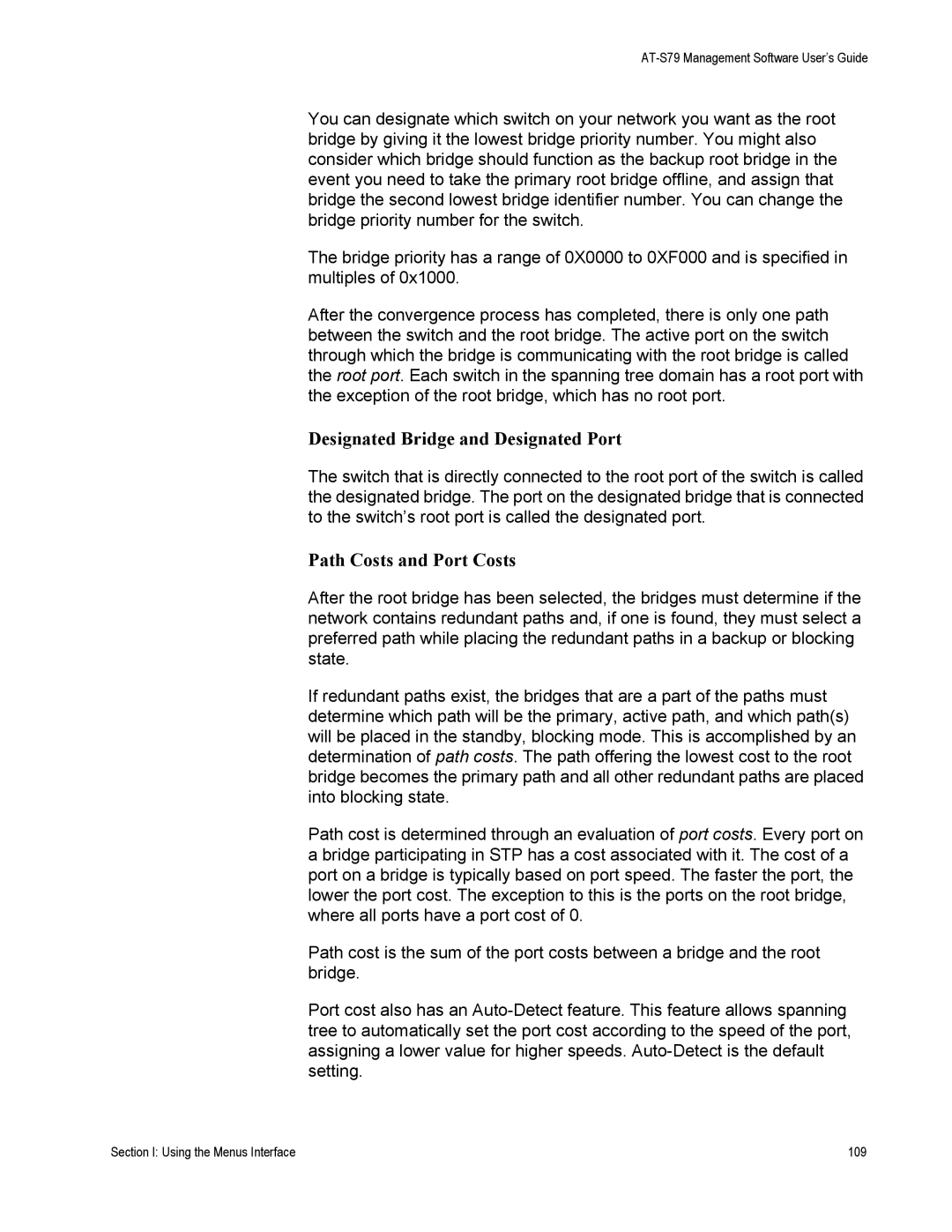AT-S79 Management Software User’s Guide
You can designate which switch on your network you want as the root bridge by giving it the lowest bridge priority number. You might also consider which bridge should function as the backup root bridge in the event you need to take the primary root bridge offline, and assign that bridge the second lowest bridge identifier number. You can change the bridge priority number for the switch.
The bridge priority has a range of 0X0000 to 0XF000 and is specified in multiples of 0x1000.
After the convergence process has completed, there is only one path between the switch and the root bridge. The active port on the switch through which the bridge is communicating with the root bridge is called the root port. Each switch in the spanning tree domain has a root port with the exception of the root bridge, which has no root port.
Designated Bridge and Designated Port
The switch that is directly connected to the root port of the switch is called the designated bridge. The port on the designated bridge that is connected to the switch’s root port is called the designated port.
Path Costs and Port Costs
After the root bridge has been selected, the bridges must determine if the network contains redundant paths and, if one is found, they must select a preferred path while placing the redundant paths in a backup or blocking state.
If redundant paths exist, the bridges that are a part of the paths must determine which path will be the primary, active path, and which path(s) will be placed in the standby, blocking mode. This is accomplished by an determination of path costs. The path offering the lowest cost to the root bridge becomes the primary path and all other redundant paths are placed into blocking state.
Path cost is determined through an evaluation of port costs. Every port on a bridge participating in STP has a cost associated with it. The cost of a port on a bridge is typically based on port speed. The faster the port, the lower the port cost. The exception to this is the ports on the root bridge, where all ports have a port cost of 0.
Path cost is the sum of the port costs between a bridge and the root bridge.
Port cost also has an
Section I: Using the Menus Interface | 109 |
